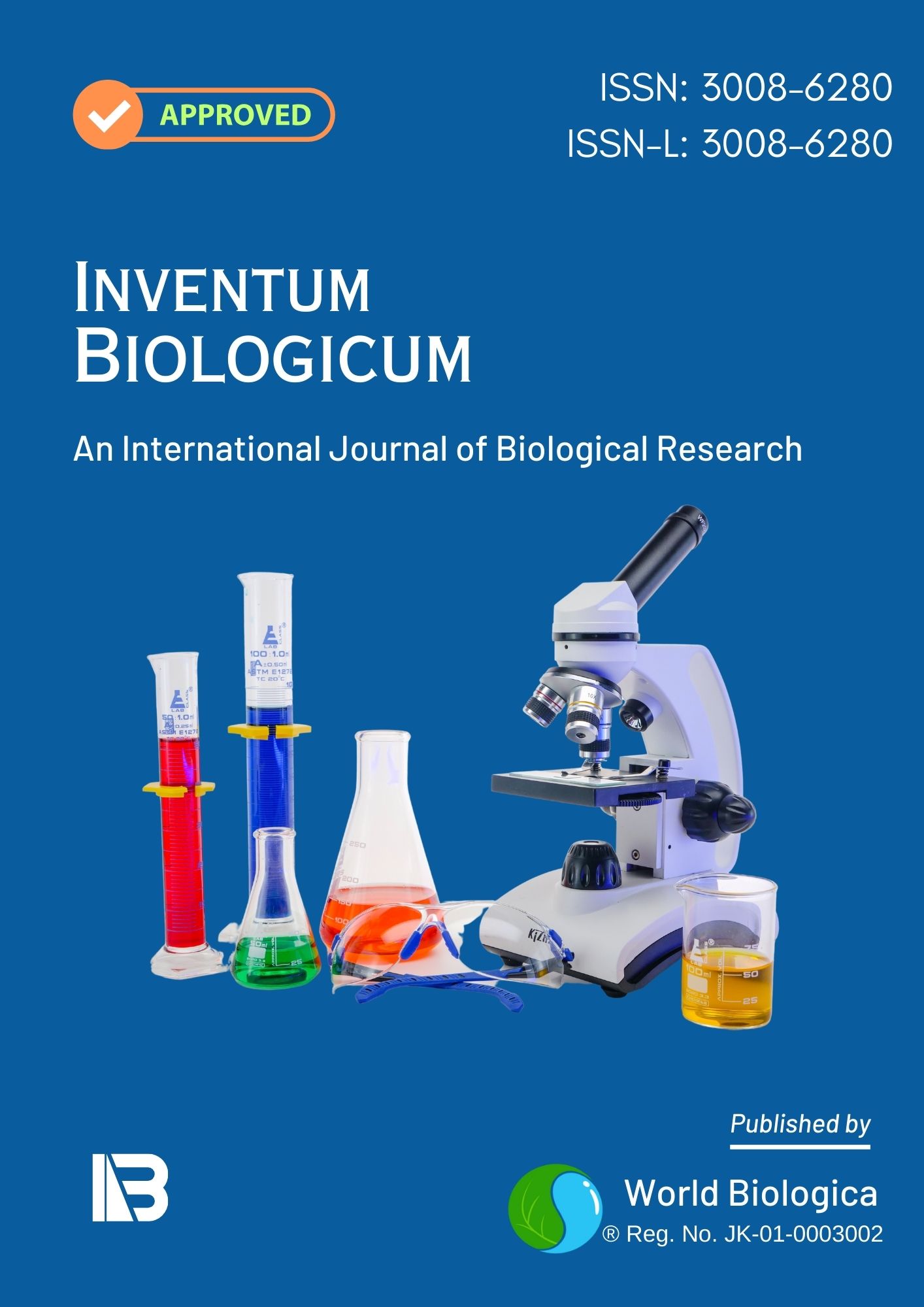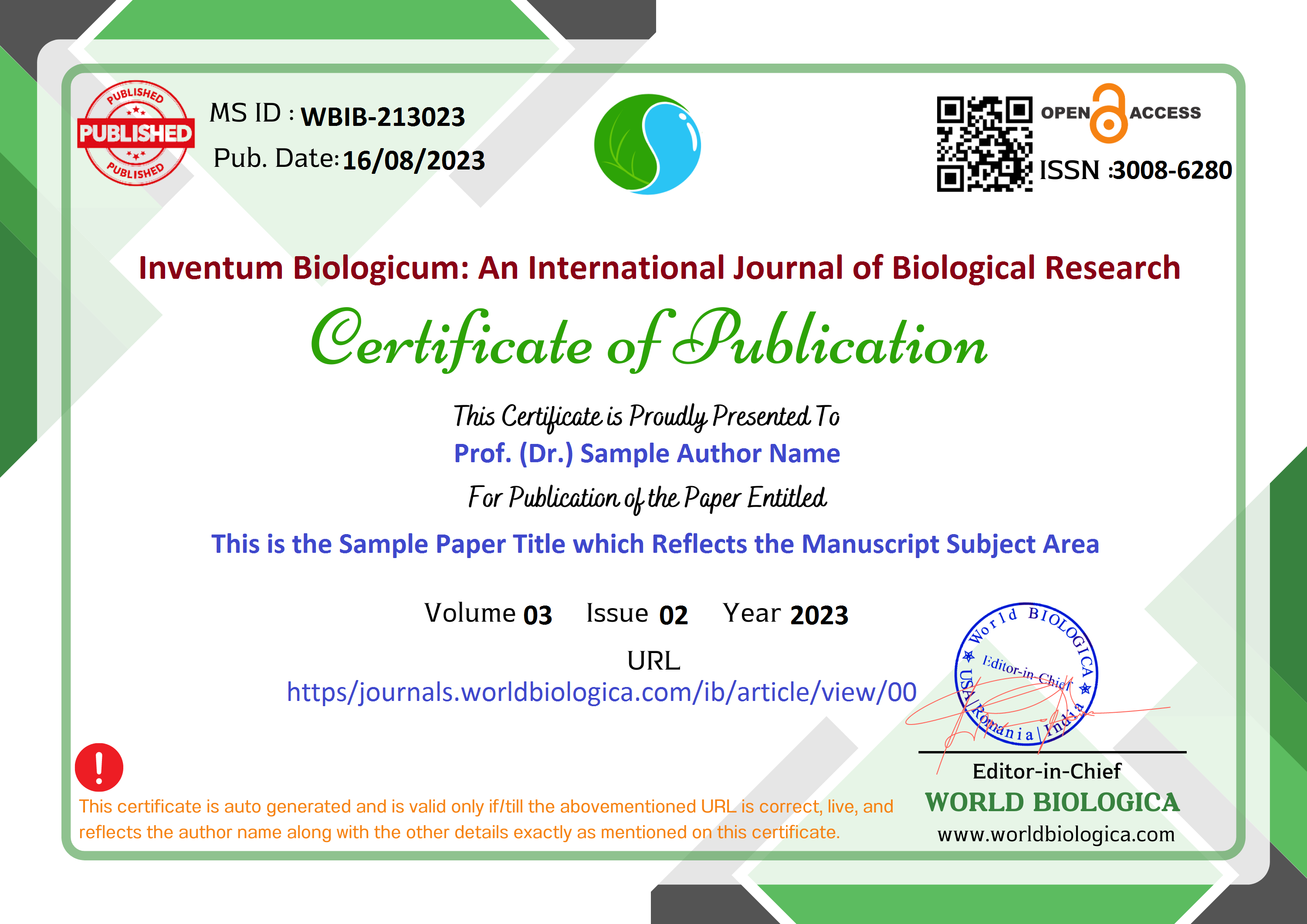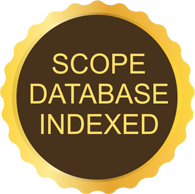Role of Biodiversity in Ecological Sustainability
An Ecoagricultural Perspective
Keywords:
Agroecosystems, Sustainability, Soil fertility, Biodiversity, Pest controlAbstract
According to growing evidence, the level of internal control of function in agroecosystems is substantially determined by the amount of plant and animal diversification present. Biodiversity in agroecosystems provides a number of ecological functions in addition to food production, including as nutrient recycling, microclimate management, local hydrological process regulation, suppression of undesired species, and noxious chemical detoxification. The importance of biodiversity in crop protection, soil fertility and human health is examined in detail in this paper. It is suggested that the sustainability of biodiversity-mediated renewal processes and ecological services is dependent on the preservation of biological integrity and variety in agroecosystems. Agroecosystem management and design strategies that improve functional biodiversity in agricultural fields are discussed.
Downloads
References
Alavanja, M. C., Ross, M. K., & Bonner, M. R. (2013). Increased cancer burden among pesticide applicators and others due to pesticide exposure. CA: A Cancer Journal for Clinicians, 63(2), 120-142.
Altieri, M. A. (1995). Agroecology: the science of sustainable agriculture Westview Press. Boulder, Colorado. EEUU.
Altieri, M. A. (1999). The ecological role of biodiversity in agroecosystems. In Invertebrate biodiversity as bioindicators of sustainable landscapes (pp. 19-31). Elsevier.
Altieri, M. A., & Letourneau, D. K. (1982). Vegetation management and biological control in agroecosystems. Crop protection, 1(4), 405-430.
Andow, D. A. (1991). Vegetational diversity and arthropod population response. Annual review of entomology, 36(1), 561-586.
Baker, K.E, & Cook, R.J. (1974). Biological Control of Plant Pathogens (pp. 433). Freeman, San Francisco, CA.
Boatman, N. D. (1994). Field margins: integrating agriculture and conservation. Proceedings of a symposium held at Coventry, UK, 18-20 April 1994.
Buchmann, S. L., & Nabhan, G. P. (2012). The forgotten pollinators. Island Press.
Campbell, R. (1989). Biological Control of Microbial Plant Pathogens (pp. 199). Cambridge University Press, Cambridge.
Cary, S. C., & Fierer, N. (2014). The importance of sample archiving in microbial ecology. Nature Reviews Microbiology, 12(12), 789-790.
Cox, G.W., & Atkins, M.D. (1979). Agricultural Ecology (pp. 721). Freeman, San Francisco, CA.
Edwards, C. A., Grove, T. L., Harwood, R. R., & Colfer, C. P. (1993). The role of agroecology and integrated farming systems in agricultural sustainability. Agriculture, Ecosystems & Environment, 46(1-4), 99-121.
Epstein, L. (2014). Fifty years since silent spring. Annual review of phytopathology, 52, 377-402.
Evans, T. A., Dawes, T. Z., Ward, P. R., & Lo, N. (2011). Ants and termites increase crop yield in a dry climate. Nature communications, 2(1), 1-7.
Francis, C. A. (1986). Multiple cropping systems (No. 631.58 F8471m Ej. 1 005776). New York: Macmillan.
Ganz, H. H., Turner, W. C., Brodie, E. L., Kusters, M., Shi, Y., Sibanda, H., ... & Getz, W. M. (2014). Interactions between Bacillus anthracis and plants may promote anthrax transmission. PLoS neglected tropical diseases, 8(6), e2903.
Harlan, J. R. (1975). Our vanishing genetic resources. Science, 188(4188), 618-621.
Hartel, P. G. (2005). Microbial Processes: Environmental Factors (pp. 448–455). In Hillel, D. (Ed.) Encyclopedia of Soils in the Environment, Volume 2, Elsevier, Oxford.
Hendrix, P. F., Crossley, D. A., Blair, J. M., & Coleman, D. C. (2020). Soil biota as components of sustainable agroecosystems. In Sustainable agricultural systems (pp. 637-654). CRC press.
Hillel, D. (1992). Out of the Earth: Civilization and the Life of the Soil. Univ of California Press.
Kearns, C. A., Inouye, D. W., & Waser, N. M. (1998). Endangered mutualisms: the conservation of plant-pollinator interactions. Annual review of ecology and systematics, 29(1), 83-112.
Khieu, V., Schär, F., Forrer, A., Hattendorf, J., Marti, H., Duong, S., ... & Odermatt, P. (2014). High prevalence and spatial distribution of Strongyloides stercoralis in rural Cambodia. PLoS neglected tropical diseases, 8(6), e2854.
Ladizinsky, G. (1989). Ecological and genetic considerations in collecting and using wild relatives (pp. 297–305). In Brown, A. H. D., Frankel, O. H., Marshall, D. R., Williams J. T., (eds.) The Use of Plant Genetic Resources Cambridge University Press, Cambridge.
Lande, R. (1988). Genetics and demography in biological conservation. Science, 241(4872), 1455-1460.
Mänd, M., Mänd, R., & Williams, I. H. (2002). Bumblebees in the agricultural landscape of Estonia. Agriculture, ecosystems & environment, 89(1-2), 69-76.
Malik, J. A., Wani, A. A., Wani, K. A., & Bhat, M. A. (2020). Role of White Willow (Salix alba L.) for cleaning up the toxic metal pollution. In Bioremediation and Biotechnology (pp. 257-268). Springer, Cham.
McMullen, M., Jones, R., & Gallenberg, D. (1997). Scab of wheat and barley: a re-emerging disease of devastating impact. Plant disease, 81(12), 1340-1348.
Miller, R. H. (2020). Soil microbiological inputs for sustainable agricultural systems. In Sustainable agricultural systems (pp. 614-623). CRC Press.
Miller, R.H. (1990). Soil microbiological inputs for sustainable agriculture (pp. 614-623). In: Edwards, C.A., Lai, Rattan, Madden, Patrick, Miller, Robert H., House, Gar (Eds.), Sustainable Agricultural Systems. Soil and Water Conservation Society, IA.
Mokyr, J. (2004). Accounting for the industrial revolution. The Cambridge economic history of modern Britain, 1, 1700-1860.
Paoletti, M.G., Foissner, W., & Coleman, D. (Eds.) (1994). Soil Biota, Nutrient Cycling, and Farming Systems (pp. 314). Lewis Publishers, Boca Raton.
Reddi, E. U. B. (1987). Under-pollination a major constraint of cashew production. In Proc. Indian Nat. Sci. Acad.
Rillig, M. C., & Mummey, D. L. (2006). Mycorrhizas and soil structure. New Phytologist, 171(1), 41-53.
Sánchez-Moreno, S., & Ferris, H. (2007). Suppressive service of the soil food web: effects of environmental management. Agriculture, ecosystems & environment, 119(1-2), 75-87.
Six, J., Frey, S. D., Thiet, R. K., & Batten, K. M. (2006). Bacterial and fungal contributions to carbon sequestration in agroecosystems. Soil Science Society of America Journal, 70(2), 555-569.
Smith, B. D. (1995). The Emergence of Agriculture. Scientific American Library. New York.
Southwood, T. R. E. (1970). Ecological background to pest management. Concepts of Pest Managements, 6-29.
Sprigg, W. A., Nickovic, S., Galgiani, J. N., Pejanovic, G., Petkovic, S., Vujadinovic, M., ... & El-Askary, H. (2014). Regional dust storm modeling for health services: the case of valley fever. Aeolian Research, 14, 53-73.
Steffan-Dewenter, I., & Tscharntke, T. (1999). Effects of habitat isolation on pollinator communities and seed set. Oecologia, 121(3), 432-440.
Swift, M. J. (1993). Biodiversity and ecosystem function in agroecosystems. Biodiversity and ecosystem function, 57-83.
Toledo, V. M. (1985). Ecología y Autosuficiencia Alimentaria. Siglo XXI. México, 160.
Tonhasca Jr, A., & Byrne, D. N. (1994). The effects of crop diversification on herbivorous insects: a meta‐analysis approach. Ecological Entomology, 19(3), 239-244.
Vandermeer, J., & Perfecto, I. (1995). Breakfast of Biodiversity: The Truth About Rain Forest Destruction. Oakland. CA: Food First.
Xu J., Badola, R., Chettri, N., Chaudhary, R.P., Zomer, R., Pokhrel, B., Hussain, S.A., Pradhan, S., & Pradhan, R. (2019). Sustaining Biodiversity and Ecosystem Services in the Hindu Kush Himalaya. In Wester, P., Mishra, A., Mukherji, A., Shrestha, A. (eds) The Hindu Kush Himalaya Assessment. Springer, Cham. https://doi.org/10.1007/978-3-319-92288-1_5
Zhang, R., Wang, J., & Niu, S. (2021). Toward a sustainable grazing management based on biodiversity and ecosystem multifunctionality in drylands. Current Opinion in Environmental Sustainability, 48, 36-43.
Zhu, Y., Chen, H., Fan, J., Wang, Y., Li, Y., Chen, J., ... & Mundt, C. C. (2000). Genetic diversity and disease control in rice. Nature, 406(6797), 718-722.
Downloads
-
Download PDF
 Abstract Views: 222,
Abstract Views: 222,  Download PDF: 87
Download PDF: 87
Published
How to Cite
Issue
Section
License
Copyright (c) 2021 Inventum Biologicum: An International Journal of Biological Research

This work is licensed under a Creative Commons Attribution-NonCommercial-NoDerivatives 4.0 International License.


















